
The West Bank closure system comprises over 600 physical barriers placed by the Israeli Defense Forces (IDF) on roads to control and restrict Palestinian vehicular traffic, which the Israeli Government states is designed to protect Israeli citizens from Palestinian attacks. As of 12 April 2005, 605 closure barriers were recorded in the West Bank compared to 680 in November 2004. The closures are the primary cause of poverty and the humanitarian crisis in the West Bank and Gaza and have restricted Palestinian access to health and education services, employment, markets and social and religious networks. Most of the closure barriers removed were earth mounds. Read more about UN records 605 closure barriers in the West Bank

Around half of the Palestinian population was living below the official poverty line last year, more than double the number in 2000, unemployment increased, and there is no hope for improvement unless guarded optimism on the political front is translated into economic activity, according to the latest review of the humanitarian situation in the occupied Palestinian territory for 2004. The report summarises the main humanitarian trends in the occupied Palestinian territory in 2004. It is an updated version of the report submitted in November 2004 by UN agencies working in the occupied Palestinian territory to the Ad Hoc Liaison Committee. Read more about UN review paints gloomy picture of 2004 economy in occupied Palestinian territory
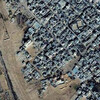
Rafah Terminal, located on the Egyptian/Gaza Strip border, has been closed by the Israel armed forces since 12 December 2004. The terminal is effectively the only access point for Gaza Strip residents to areas outside the Gaza Strip. It has now been closed for 39 consecutive days, by far the longest period of uninterrupted closure in the last four years of the Intifada. Between 18 July and 5 August 2004, Rafah Terminal was closed for 19 consecutive days. This closure attracted widespread international attention because of the deteriorating humanitarian situation faced by as many as 2,500 people stuck south of the border. Read more about Rafah border closed for 39 consecutive days
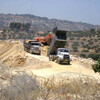
The glory of Bethlehem, a city of historical and religious importance for those of the Christian, Muslim and Jewish faiths alike is vanishing. Today, the centuries-old link with Jerusalem is being undermined. A number of Israeli settlements have been built around Bethlehem. Additionally, movement restrictions for Palestinians have been tightened due to the security situation with the aim of protecting Israeli civilians from suicide attacks and other violence. Bethlehem’s self-sufficiency has also diminished with the loss of tourists and pilgrims due to the conflict and to movement restrictions. Read more about Costs of conflict: The changing face of Bethlehem
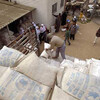
Humanitarian agencies are appealing for US$ 302,601,889 to maintain their assistance to Palestinians. The continued provision of food aid in 2004 has helped to limit the rise in malnutrition, and emergency relief has served to lower the proportion of those living in deep poverty. Humanitarian agencies will keep on supporting Palestinian livelihoods and help to prevent further depletion of their assets. Humanitarian agencies released their consolidated appeal today. They expect that humanitarian needs will continue gradually to increase during 2005. Given current levels of violence and stalled negotiations, there is limited hope that closure will be lifted. Read more about Humanitarian agencies appeal for $302 million to maintain their assistance to Palestinians

Heavy fighting has taken place in the last six days. The Palestinian Ministry of Health (MoH) has recorded 82 Palestinian deaths of which 24 were children. Three hundred and sixteen Palestinians have been injured of which over 110 were children. Five Israelis have died including two children who were killed by a home made rocket fired by Palestinian militants from northern Gaza into Sderot on 29 September. The Israeli incursion has particularly focused Jabalia refugee camp. Israeli forces have isolated Beit Hanoun from the rest of the Gaza Strip with no movement for the local population in and out of the area. Read more about Humanitarian Situation Update: Northern Gaza
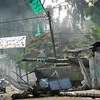
Israeli forces entered northern Gaza at 22.30 on Tuesday, 28 September establishing positions on high ground overlooking Izbet Beit Hanoun, Beit Lahia and Jabalia. The IDF committed reinforcements to northern Gaza in the early hours of this morning with estimates of up to 100 tanks entering the area. Defence Minister Mofaz announced on Thursday evening a “large scale and prolonged operation” aimed at pushing Palestinian missiles out of range of Sderot with plans to create a buffer zone. The focus of the operation so far has been on the Jabalia camp to the north of Gaza city. Read more about Humanitarian Situation Update: Jabalia Camp
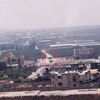
A preliminary assessment of the effects of the Israeli operation “Forward Shield,” in the northern Gaza Strip, particularly in Beit Hanoun, shows that Beit Hanoun and neighbouring areas suffered considerable damage. This report covers the period 29 June to 5 August 2004. Aside from the deaths and injuries, damage and destruction to property and infrastructure are primary humanitarian concerns resulting from the operation. Public and private property - homes, agricultural land, factories, educational facilities, roads, electricity, and water and sewerage networks - were damaged or destroyed in Beit Hanoun. Read more about Report: "Operation Forward" in Beit Hanoun
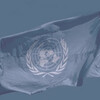
Thirteen United Nations institutions operating in the occupied Palestinian territory expressed concern today about the hunger strike that reportedly more than 2,900 Palestinian prisoners and detainees have joined. The UN’s Special Coordinator for the Middle East Peace Process Terje Roed-Larsen calls on the Israeli authorities to comply with its international obligations and to make every effort to find, with the prisoners, an appropriate resolution to the hunger strike. The UN agencies and offices remind Israel of its obligations under the Fourth Geneva Convention and relevant international human rights instruments which provide for the protection of detainees and prisoners. Read more about Thirteen UN agencies expressed concern about conditions Palestinian prisoners

On 30 June 2004, the Government of Israel revised the route of the West Bank Barrier and published a map on its seam zone website. The previous map was released on 23 October 2003. In June 2002, the Government of Israel began construction of the Barrier following several suicide bombings and attacks by Palestinian militants on Israeli citizens. It maintains that the Barrier is a temporary structure to physically separate the West Bank from Israel to prevent such attacks on Israeli citizens. Once completed, the Barrier will be 622 km long. Approximately 185 km of the Barrier has already been constructed. This section consists of a combination of ditches, trenches, roads, razor wire, electronic fences and concrete walls. Read more about Humanitarian Implications of Latest Wall Projections









